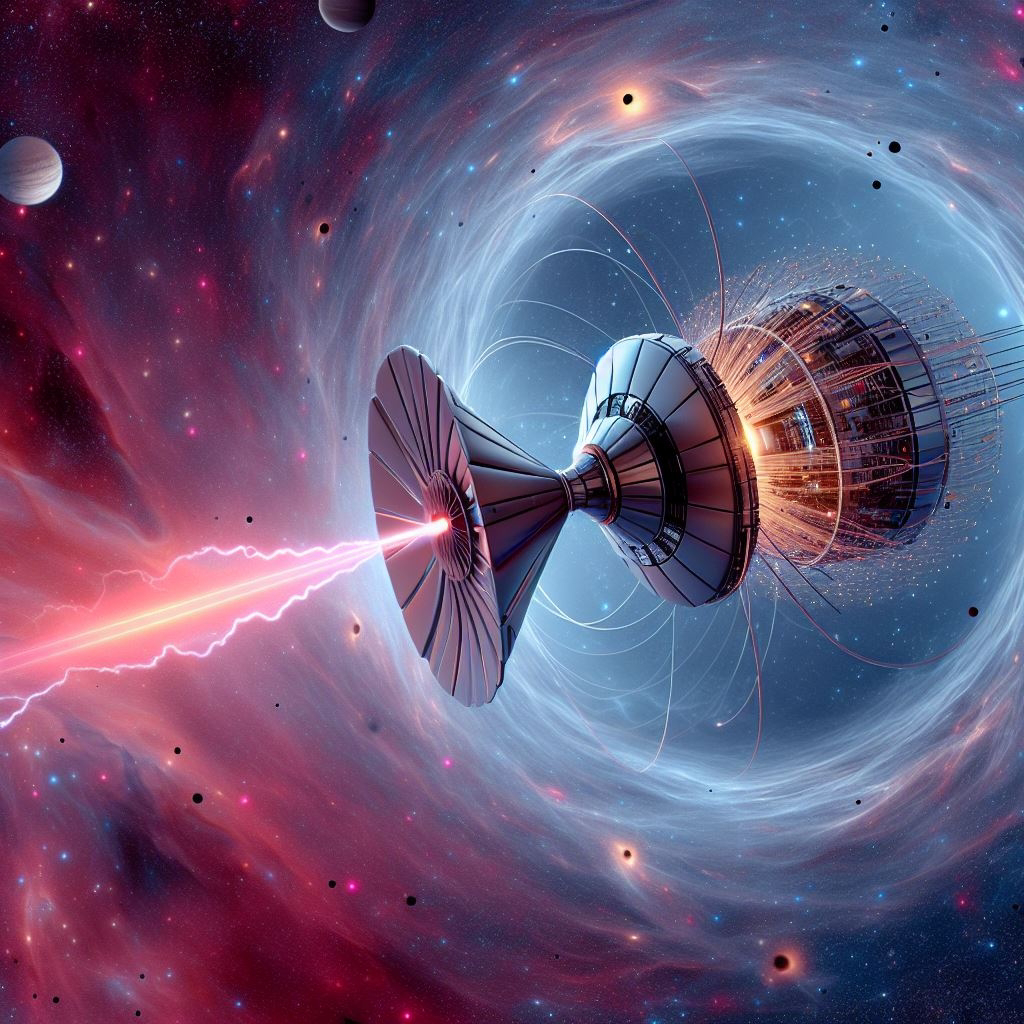Abstract: This hypothesis proposes that the Wilkinson Microwave Anisotropy Probe (WMAP) can be repurposed as a novel space navigation system by leveraging its unprecedented sensitivity to the Cosmic Microwave Background (CMB) radiation. This could provide a unique and potentially superior method for navigating around black holes and stars compared to current systems relying on radio or optical signals.
Rationale:
CMB as a Reference Frame: The CMB is a uniform, isotropic radiation field permeating the entire universe. Its precise temperature and polarization fluctuations serve as a highly stable reference point in any location.
WMAP's Superiority: WMAP boasts unmatched sensitivity and angular resolution for CMB measurements, enabling it to detect even the subtlest variations in the radiation field.
Black Hole and Star Signatures: The gravitational influence of black holes and stars distorts the CMB locally, creating unique signatures in its temperature and polarization patterns. WMAP, with its exceptional precision, could detect these signatures and use them to determine the relative position and mass of these celestial objects.
Navigation Potential:
Black Hole Detection and Avoidance: By measuring CMB distortions, WMAP could identify the presence of black holes and map their event horizons, allowing spacecraft to safely navigate around them.
Star System Mapping: WMAP could create a detailed map of the CMB distortions surrounding stars, revealing their mass distribution, planetary systems, and potentially habitable zones. This information could be crucial for interstellar travel and the search for exoplanets.
Interstellar Positional Awareness: By comparing local CMB measurements with a pre-recorded map of the CMB, WMAP could determine the relative position and orientation of a spacecraft within the universe, independent of traditional radio or optical navigation methods.
Challenges and Further Investigation:
Signal Processing: Developing algorithms to accurately extract black hole and star signatures from the CMB data requires advanced signal processing techniques.
Calibration and Error Correction: Precise calibration of WMAP and accounting for instrumental errors are crucial for reliable navigation.
Testing and Validation: Extensive simulations and ground-based experiments are needed to validate the feasibility of using WMAP for space navigation before in-flight testing.
Potential Benefits:
Enhanced Safety: Accurately detecting and avoiding black holes would significantly improve the safety of interstellar travel.
Improved Efficiency: Efficient navigation around stars and within star systems could drastically reduce travel times.
Independent Navigation: Reliance on CMB, a ubiquitous and unchanging reference frame, eliminates dependence on external communication infrastructure.
Conclusion: This hypothesis proposes a novel application for WMAP as a space navigation system around black holes and stars. While challenges remain, the potential benefits for interstellar travel and exploration are immense. Further research and development are warranted to test and refine this concept, potentially revolutionizing our approach to navigating the vast expanse of space.
Note: This hypothesis is speculative and requires further research and development before it can be implemented as a practical navigation system. However, it presents a promising and theoretically sound direction for future space exploration technology.
Disclaimer: Google's Artifical Intelligence has been used to generate this paper using all the information available to it in its model.

No comments:
Post a Comment